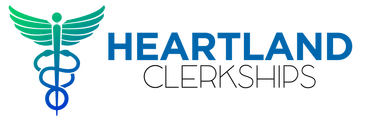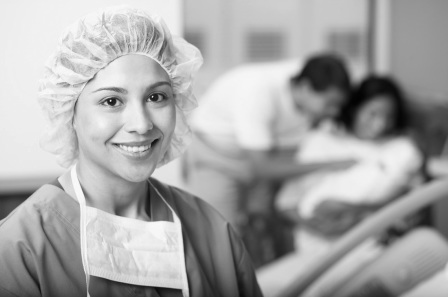USMLE BREAKDOWN
Step 1
USMLE Step 1 assesses whether medical school students or graduates understand and can apply important concepts of the basic sciences to the practice of medicine. As of 2007, it covers the following subjects, in both systemic (general and individual anatomical characteristics) and procedural (functional, therapeutic, environmental, and abnormality) themes:
Scores are reported as a three digit score and a two digit score, however as of July 1, 2011 only the 3-digit score is reported on USMLE transcripts. On January 1, 2010, the passing score was raised from 185 to 188. The average score in 2011 was 225 with a standard deviation of 22. If the student passes the exam, he or she may not repeat the exam to achieve a higher score.
The Step 1 score is frequently used in medical residency applications as a measure of a candidate's likelihood to succeed in that particular residency (and on that specialty's board exams). Step 1 score has been cited as the most important criteria by residency program directors when selecting graduating medical students for their residency program. Average USMLE Step 1 scores for various residencies are available in "Charting Outcomes in the Match" athttp://www.nrmp.org/data/chartingoutcomes2011.pdf. Averages for graduates of U.S. medical schools who matched into residency range from 213 for a Family Medicine to 249 for Plastic Surgery.
The Step 1 exam is widely viewed as the hardest and most important examination a medical student will take during his/her career.
Step 2
USMLE Step 2 is designed to assess whether medical school students or graduates can apply medical knowledge, skills and understanding of clinical science essential for provision of patient care under supervision. US medical students typically take Step 2 during the fourth year of medical school. Step 2 is further divided into two separate exams.
Step 2-CK
USMLE Step 2 CK is designed to assess clinical knowledge through a traditional, multiple-choice examination. It is a 9 hour exam consisting of 8 blocks of 44 questions each. One hour is given for each block of questions. The subjects included in this exam are clinical sciences like Medicine, Surgery, Pediatrics, Psychiatry and Obstetrics & Gynecology.
Step 2-CS
USMLE Step 2 CS is designed to assess clinical skills through simulated patient interactions, in which the examinee interacts with standardized patients portrayed by actors. Each examinee faces 12 Standardized Patients (SPs) and has 15 minutes to complete history taking and clinical examination for each patient, and then 10 more minutes to write a patient note describing the findings, initial differential diagnosis list and a list of initial tests. Administration of the Step 2-CS began in 2004. The examination is only offered in five cities across the country:
Step 3
USMLE Step 3 is the final exam in the USMLE series designed to assess whether a medical school graduate can apply medical knowledge and understanding of biomedical and clinical science essential for the unsupervised practice of medicine. Graduates of US medical schools typically take this exam at the end of the first year of residency. Foreign medical graduates can take Step 3 before starting residency in about ten U.S. states. Connecticut is frequently chosen for such purpose because it does not require simultaneous application for licensure, unlike New York. Starting from 2014 USMLE Step 3 will be divided into two separate parts.
USMLE Step 1 assesses whether medical school students or graduates understand and can apply important concepts of the basic sciences to the practice of medicine. As of 2007, it covers the following subjects, in both systemic (general and individual anatomical characteristics) and procedural (functional, therapeutic, environmental, and abnormality) themes:
- Anatomy,
- Physiology,
- Biochemistry,
- Pharmacology,
- Pathology,
- Microbiology,
- Behavioral sciences,
- Interdisciplinary topics, such as nutrition, genetics, and aging.
Scores are reported as a three digit score and a two digit score, however as of July 1, 2011 only the 3-digit score is reported on USMLE transcripts. On January 1, 2010, the passing score was raised from 185 to 188. The average score in 2011 was 225 with a standard deviation of 22. If the student passes the exam, he or she may not repeat the exam to achieve a higher score.
The Step 1 score is frequently used in medical residency applications as a measure of a candidate's likelihood to succeed in that particular residency (and on that specialty's board exams). Step 1 score has been cited as the most important criteria by residency program directors when selecting graduating medical students for their residency program. Average USMLE Step 1 scores for various residencies are available in "Charting Outcomes in the Match" athttp://www.nrmp.org/data/chartingoutcomes2011.pdf. Averages for graduates of U.S. medical schools who matched into residency range from 213 for a Family Medicine to 249 for Plastic Surgery.
The Step 1 exam is widely viewed as the hardest and most important examination a medical student will take during his/her career.
Step 2
USMLE Step 2 is designed to assess whether medical school students or graduates can apply medical knowledge, skills and understanding of clinical science essential for provision of patient care under supervision. US medical students typically take Step 2 during the fourth year of medical school. Step 2 is further divided into two separate exams.
Step 2-CK
USMLE Step 2 CK is designed to assess clinical knowledge through a traditional, multiple-choice examination. It is a 9 hour exam consisting of 8 blocks of 44 questions each. One hour is given for each block of questions. The subjects included in this exam are clinical sciences like Medicine, Surgery, Pediatrics, Psychiatry and Obstetrics & Gynecology.
Step 2-CS
USMLE Step 2 CS is designed to assess clinical skills through simulated patient interactions, in which the examinee interacts with standardized patients portrayed by actors. Each examinee faces 12 Standardized Patients (SPs) and has 15 minutes to complete history taking and clinical examination for each patient, and then 10 more minutes to write a patient note describing the findings, initial differential diagnosis list and a list of initial tests. Administration of the Step 2-CS began in 2004. The examination is only offered in five cities across the country:
- Philadelphia
- Chicago
- Atlanta
- Houston
- Los Angeles
Step 3
USMLE Step 3 is the final exam in the USMLE series designed to assess whether a medical school graduate can apply medical knowledge and understanding of biomedical and clinical science essential for the unsupervised practice of medicine. Graduates of US medical schools typically take this exam at the end of the first year of residency. Foreign medical graduates can take Step 3 before starting residency in about ten U.S. states. Connecticut is frequently chosen for such purpose because it does not require simultaneous application for licensure, unlike New York. Starting from 2014 USMLE Step 3 will be divided into two separate parts.
- Step 3 is 16 hour examination divided over two-days. Each day of testing must be completed within eight hours.
- The first day of testing includes 336 multiple-choice items divided into 7 blocks, each consisting of 48 items. Examinees must complete each block within sixty minutes.
- The second day of testing includes 144 multiple-choice items, divided into 4 blocks of 36 items. Examinees are required to complete each block within forty-five minutes. Approximately 3 hours are allowed for these multiple-choice item blocks. Also on the second day are twelve Clinical Case Simulations, where the examinees are required to 'manage' patients in real-time case simulations. Examinees enter orders for medications and/or investigations into the simulation software, and the condition of the patient changes . Cases are of 20 or 10 minutes.
- Approximately forty-five minutes to one hour is available for break time on each of the two days of testing.


